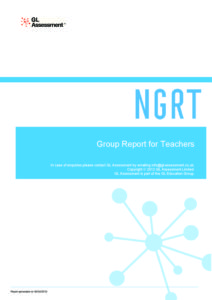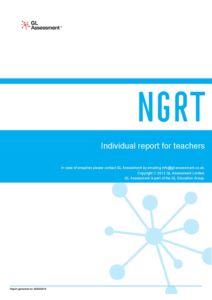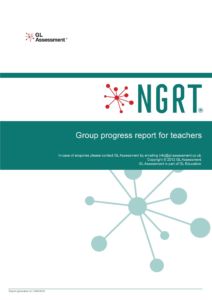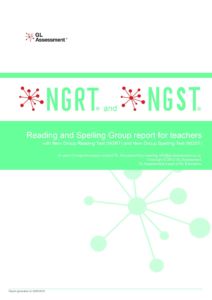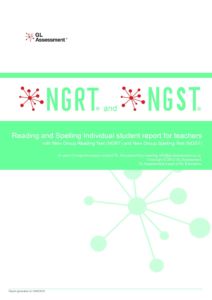
New Group Reading Test [NGRT]
A standardised, adaptive, termly assessment to measure reading skills against the national average. Use it to identify where intervention may be needed, and then to monitor impact and progress made.
For Ages: 6 – 15 years
Reading Level: Adapts to student’s reading level
Administration and Scoring: Online through GL Education’s TestWise platform
Length: Varies (adaptive); approximately 30 – 40 minutes
Note!
Free trial is for schools only. No tutoring or private practices can request a free trial
Online Forms, Reports, Kits & e-Manuals
All online resources including Forms, Reports, i-Admins, Kits and e-Manuals.
NGRT – THRICE (three administrations of the NGRT a year) – min order 10
NGRT – TWICE (two administrations of NGRT a year) – min order 10
NGRT ONLINE MARKING TOOL
NGRT Single test – min order 10
Highlights:
- It’s adaptive, responding to a student’s ability as they complete the test so more able readers are challenged and weaker ones remain engaged
- Provides you with a Standard Age Score (SAS), a reading age, Key Stage 2 or GCSE indicators, and progress measures
- Includes practical guidance for next steps
- Standardised on over 11,700 students with its national benchmarks verified each year based on data from half a million students
- Widely used in Education Endowment Foundation (EEF) reading intervention projects
What does NRGT assess?
NGRT is in two parts: sentence completion (which measures decoding with some element of comprehension) and passage comprehension (which measures a range of comprehension skills of increasing difficulty). It therefore tests not just the ability of students to decode what they read, but whether they also comprehend and apply meaning. It can be used to measure phonemic awareness in less able readers too and is particularly useful at transition points.
NGRT tells you the reading ages and the Standard Age Scores of your students, so you can introduce extra challenge or interventions to address problems before they impact on performance. This information will help you in planning curriculum content at the right levels and help to identify those who may have barriers to accessing the curriculum.
To compare ability with current attainment, our Combination Reports combine NGRT data with CAT4 data (as well as the data from Progress Test in Maths and Progress Test in English). Using these you can identify those who are under-achieving or exceeding expectations in English and maths.
The digital version can be used alongside New Group Spelling Test (NGST). The two tests work together, with a Spelling and Reading Report comparing and analysing the results from both.
What do the tests involve?
NGRT is in two parts: sentence completion, which measures decoding with some element of comprehension; and passage comprehension, which measures skills of increasing difficulty.
Children enter the test according to their chronological age and begin with the sentence completion section. Depending on their score, they move on to appropriate phonics-based tasks or to the passage comprehension section. The difficulty increases beyond the students’ ability, challenging their understanding, until their scores show that the difficulty level is too high.
What does NGRT data tell me?
The following digital reports can be instantly generated:
- NGRT group report for teachers – provides an easy to understand overview of reading attainment in a selected group or cohort. Group rank will help you quickly and easily identify those most in need of additional support.
- NGRT individual report for teachers – shows all scores plus an analysis of responses for Sentence Completion and Passage Comprehension and a short narrative report. (Or Sentence Completion and Phonics in the case of students who have taken these parts of the test.)
- NGRT progress report – When completed termly, this provides a summary of the progress made over time. Reports are available as downloadable Excel reports and pdf for easy analysis. Paper reports are also available from the NGRT Scoring & Reporting Service.
What can I do if NGRT flags concerns?
If the student scores less than 85 on NGRT, use York Assessment of Reading for Comprehension (YARC) to further diagnose reading difficulties including reading accuracy, comprehension and rate.
If there is a significant difference between sentence completion and passage comprehension in NGRT, screen for dyslexic tendencies using Rapid (ages 4-15), CoPS (ages 4-7) or LASS (ages 8-15).




